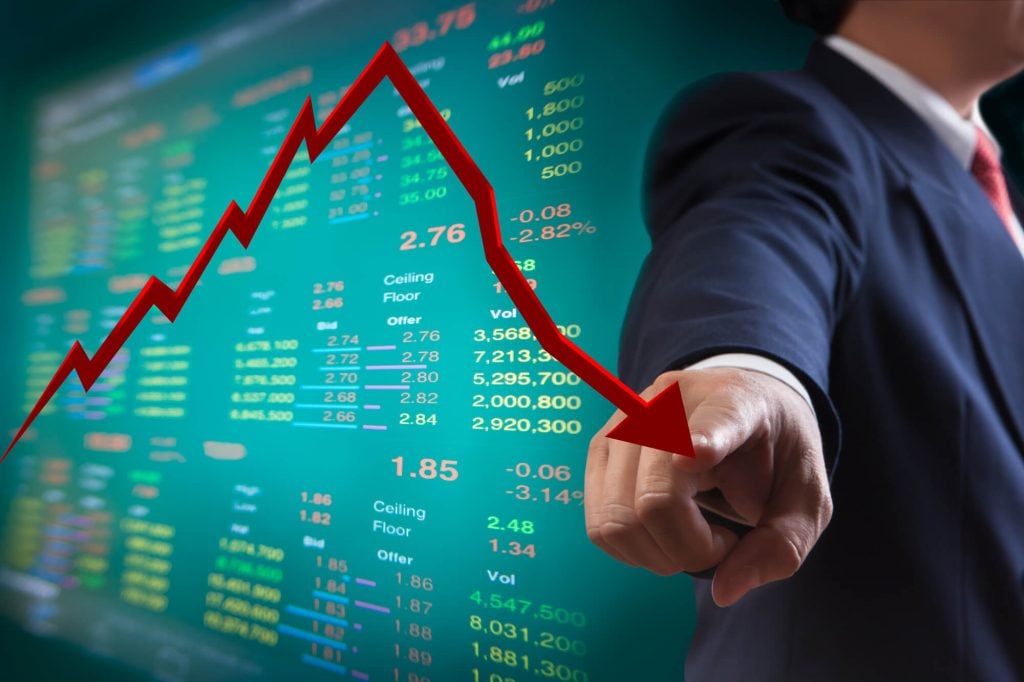Shareholders are always looking to buy in on successful businesses. In turn, businesses are always excited to get more shareholders. But sometimes, the two groups are too far apart to start a beautiful relationship.
Retail investors are gaining a greater share of the securities market every day. Companies realize that. But the most ultra-successful, high-value companies may have share prices that are too high for the average retail investor.
To fix that, every few years, a company may issue a stock split. This action lowers their stock price, letting more retail investors in on the action.

What Does a 2 for 1 Stock Split Mean?
What is a 2 for 1 stock split? This term refers to a public company that cuts its share price in half by splitting every single share into two. Shareholders in the company double their number of shares.
For example, let’s say that Company A’s shares are currently priced at $400. If they execute a 2 for 1 stock split, the value for each share drops to $200. If you held one share of stock in Company A, you’d get another one. If you had two shares, you’d now have four.
Your portfolio’s value doesn’t decline in a 2 for 1 stock split. In our example, you’d still have $400 worth of Company A’s shares. However, you would now have two shares priced at $200 each, rather than one share worth $400.
A 2 for 1 stock split doesn’t affect a company’s overall value (known as market capitalization or “market cap”). It just doubles the number of total shares. Not only do existing shareholders get to double their holdings, but the number of available, unsold shares doubles, as well.
Why Would a Company Have a 2 for 1 Stock Split?
What does a 2 for 1 stock split mean for the company? Why would they do it?
The answer is simple: By lowering the stock price and making more shares accessible, the company will attract a broader range of investors. The goal is to get more people to buy the company’s stock.
Some companies’ share prices are quite expensive. Right now, a single share in Amazon costs over $3,000. The share price for Alphabet — the company behind Google — hovers around $2,000 each. And don’t even get us started on Berkshire Hathaway, the most expensive stock on the market. A share in Warren Buffett’s company costs over $300,000 each!
These extra-high stock prices might be acceptable for wealthy shareholders and professional investors. They can afford to buy them. But less wealthy retail investors — non-professional buyers, perhaps like yourself — can’t.
A 2 for 1 stock split lets that less wealthy investor class in on a valuable stock. Retail investors tend to be much more comfortable with a lower price. And they’re more likely to buy multiple shares of the company. Many investors would rather buy 50 shares of a stock that costs $20, instead of 20 shares of a stock that costs $50.
What factors lead companies to issue stock splits? It could be anything. There’s no event or pattern of events that will always lead to a stock split. It’s a strategic decision that some companies execute when their share prices reach a certain point.
Real-Life Examples of a 2 for 1 Stock Split
Apple has a history of executing stock splits. They’ve done it five times as of this writing. The first three — in 1987, 2000, and 2005 — were all 2 for 1 stock splits. In the 2005 stock split, the price of an Apple share went from $77 to $38.50, and the number of total shares doubled.
The Coca-Cola Company has had 10 stock splits since 1935. The last one was a 2 for 1 split in 2012. Coca-Cola’s total number of shares doubled from 5.6 billion to 11.2 billion.
Disney has had three 2 for 1 stock splits in its history: 1967, 1971, and 1973.
Other Types of Stock Splits
The 2 for 1 stock split is the most common, but many other kinds of splits have happened in the history of the stock market. There are no set standards for the kinds of configurations that a stock split can take. A company can offer 3 for 1, 3 for 2, 4 for 1, 10 for 1 — any kind they want. The last time that Apple stock split in August 2020, it was a 4 for 1 stock split. They also did a 7 for 1 split in 2014.
In 2007, Disney offered one of the strangest stock splits in history: a 1,014 for 1,000 stock split. Investors who owned 1,000 shares in Disney stock got 14 more and the prices adjusted accordingly.
Why Wouldn’t a Company Split Its Stock?
Many companies don’t split their stock. Some believe that a higher stock price is a sign of stature. If only rich investors can afford to buy full shares of stock, those shares are going to look more attractive to that wealthy class. Theoretically, they’ll continue to get capital from more dependable sources.
Other companies don’t split shares because it exposes their stock to potentially volatile trading activity. Many larger blue-chip companies prefer consistency and steadiness in their stock prices. They would rather be conservative and grow value over long periods of time, rather than subject themselves to future eras of high-volume trading.
Berkshire Hathaway doesn’t split their stock for that second reason. Warren Buffett feels that doing so would encourage day traders to use the stock split to make a quick buck. Buffett has a history of warning amateur investors about the risks of day trading and speculation.
Instead, Berkshire Hathaway simply issues shares of another class of stock, Class B, which allows people with more modest means to get in on their stock. As of this writing, Berkshire Hathaway’s Class B stock costs about $245 a share, whereas Class A is close to $370,000 each. You’ll save the cost of a yacht or two if you buy Class B shares.

What Does a 2 for 1 Stock Split Mean for a Company’s Health?
There are a few potential benefits for companies that split their stock shares:
Increased Stock Value
Even though a 2 for 1 stock split cuts a company’s share price in half, it doesn’t hurt its market value. It could make individual shares more valuable. When more investors buy shares in a company, the price goes up. Since stock splits encourage new investors to acquire stock, the higher rate of buys will drive up the price.
Increased Liquidity
Liquidity is a measure of how easily a certain security can be turned into cash. Generally speaking, stocks are very liquid investments because they’re more quickly and easily sold than something like real estate.
Companies need a certain amount of liquidity to keep capital moving in so that they can pay off debts and expenses. The high trading volume encouraged by a stock split usually accomplishes that. Similarly, shareholders like liquidity because it’s easier to reshuffle and balance their portfolio, if they wish to do so.
Makes Put Options Less Expensive
A put option is a contract that investors obtain that gives them the right to sell 100 of their shares at a certain price point before a certain time. If the share price is $250 per share, the put option requires the investor to have $25,000 in cash to execute the transaction.
A 2 for 1 split stock, cutting the share price to $125, requires only $12,500 in standby capital. Splits at 3 for 1 or wider drop that price even further.
Makes the Company Look More Successful
The underlying message when a company splits its stock is: “Business is going so well that our stock price is too high. We have to split it so that a little person can afford to jump on our train!” A very magnanimous gesture, indeed!
Possible Drawbacks of a 2 for 1 Stock Split
What could go wrong with a 2 for 1 stock split?
For one thing, there’s a volatility angle. Stock splits almost always result in a high volume of trading, as new investors scramble to grab shares once they’re more affordable. This can cause the stock price to rise and fall in greater ranges in a shorter time span, a behavior referred to as volatility.
Some investors are more nervous about volatility than others. A few research studies have shown that high volatility is a sign of an impending market decline. Other investors, like day traders, aren’t as bothered because same-day volatility is the way that they earn their profits.
There’s also a risk that a stock split won’t accomplish what the company wants to: Making itself more valuable. If a company experiences a big decline in business after a stock split, its already-lower share price could decline even further. That would make them far less appealing to professional investors and mutual funds. It could even boot the company from the stock exchange listings if the share price went below one dollar.
Companies that are in trouble may fix that with a reverse stock split. As you can probably figure out, that’s when a company increases its stock price, but reduces the number of shares (and cuts current investor shares). This may help the company to survive and remain on the stock exchanges, but for many investors, a reverse stock split is not a “good look.”

Gorilla Trades Weathers the Stock Market
At Gorilla Trades, we aren’t afraid of the volatility that comes from stock splits. We’ve developed a proven system for finding growth stocks with the highest potential, helping customers to execute quickly to capitalize on them. Find out more about our services with a free trial.



